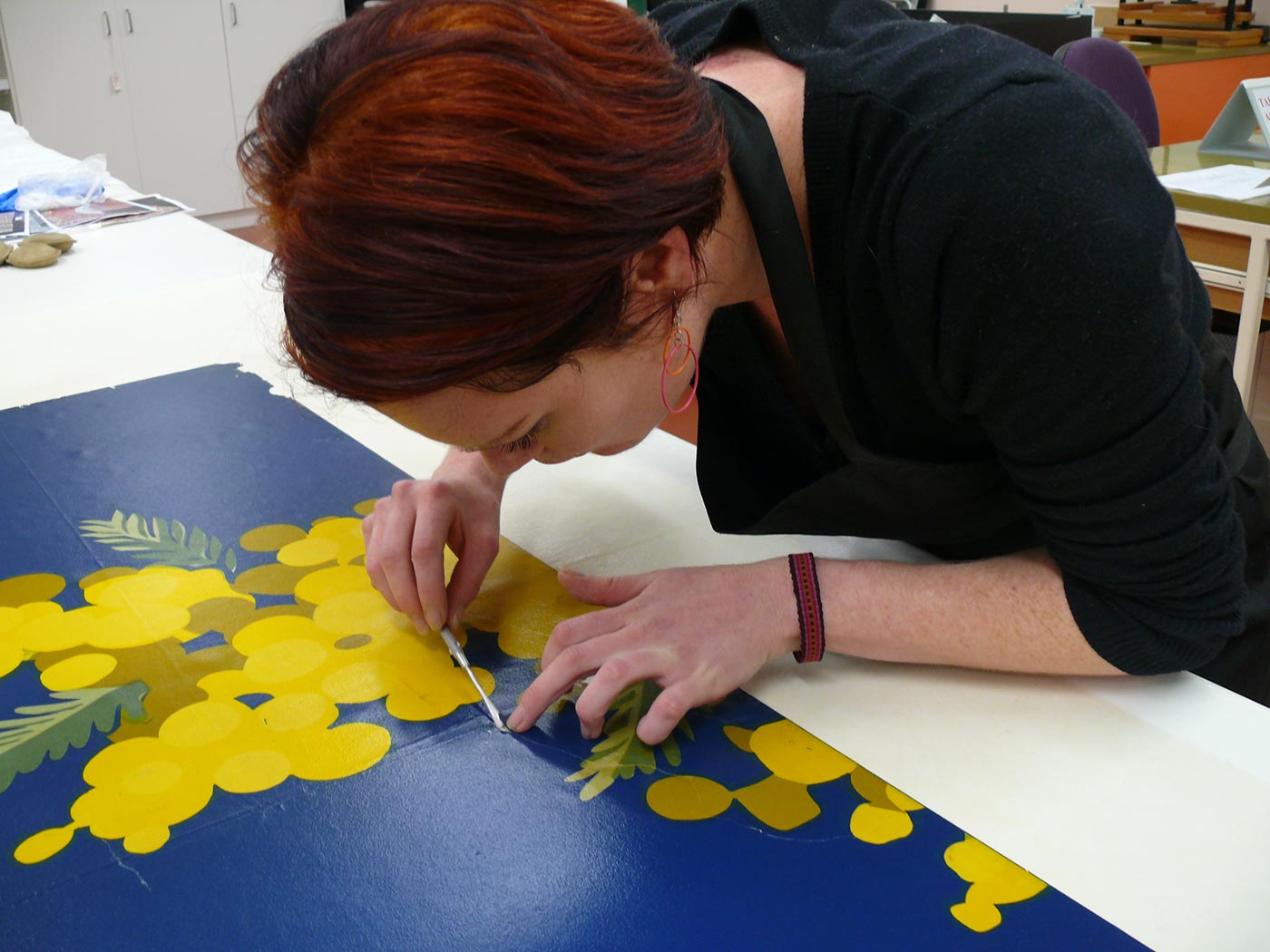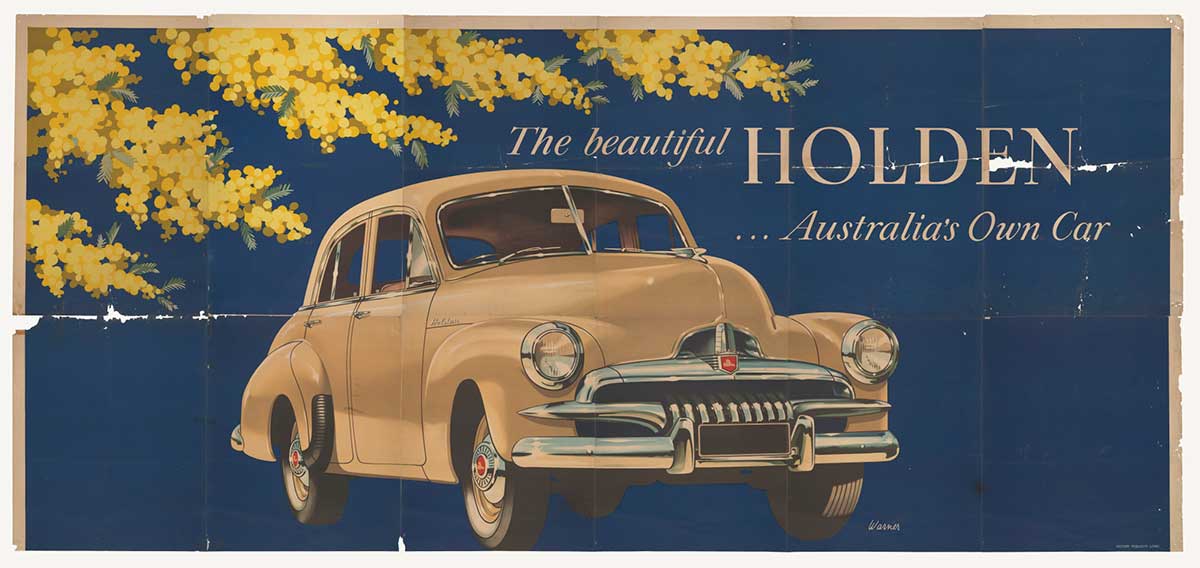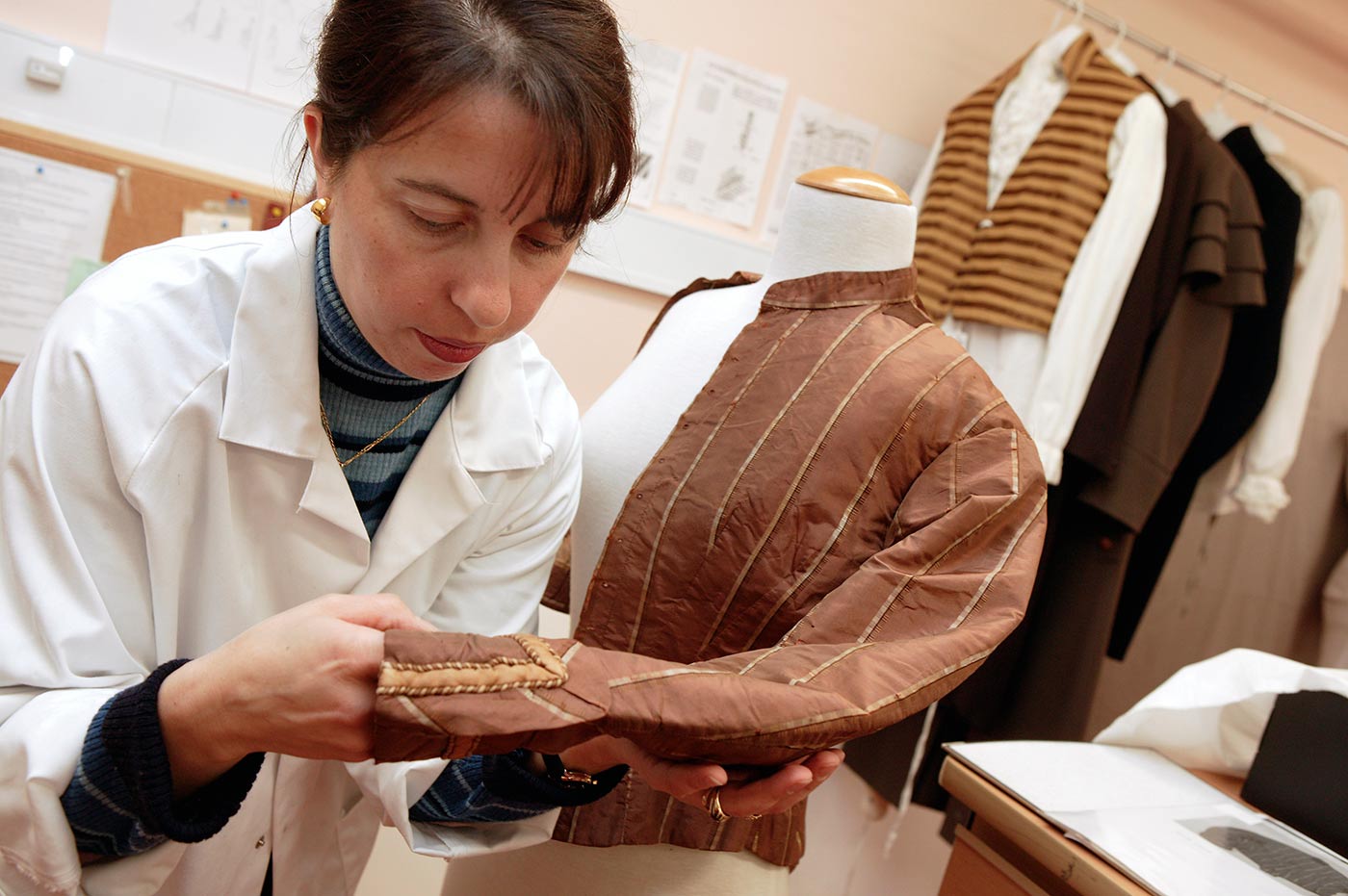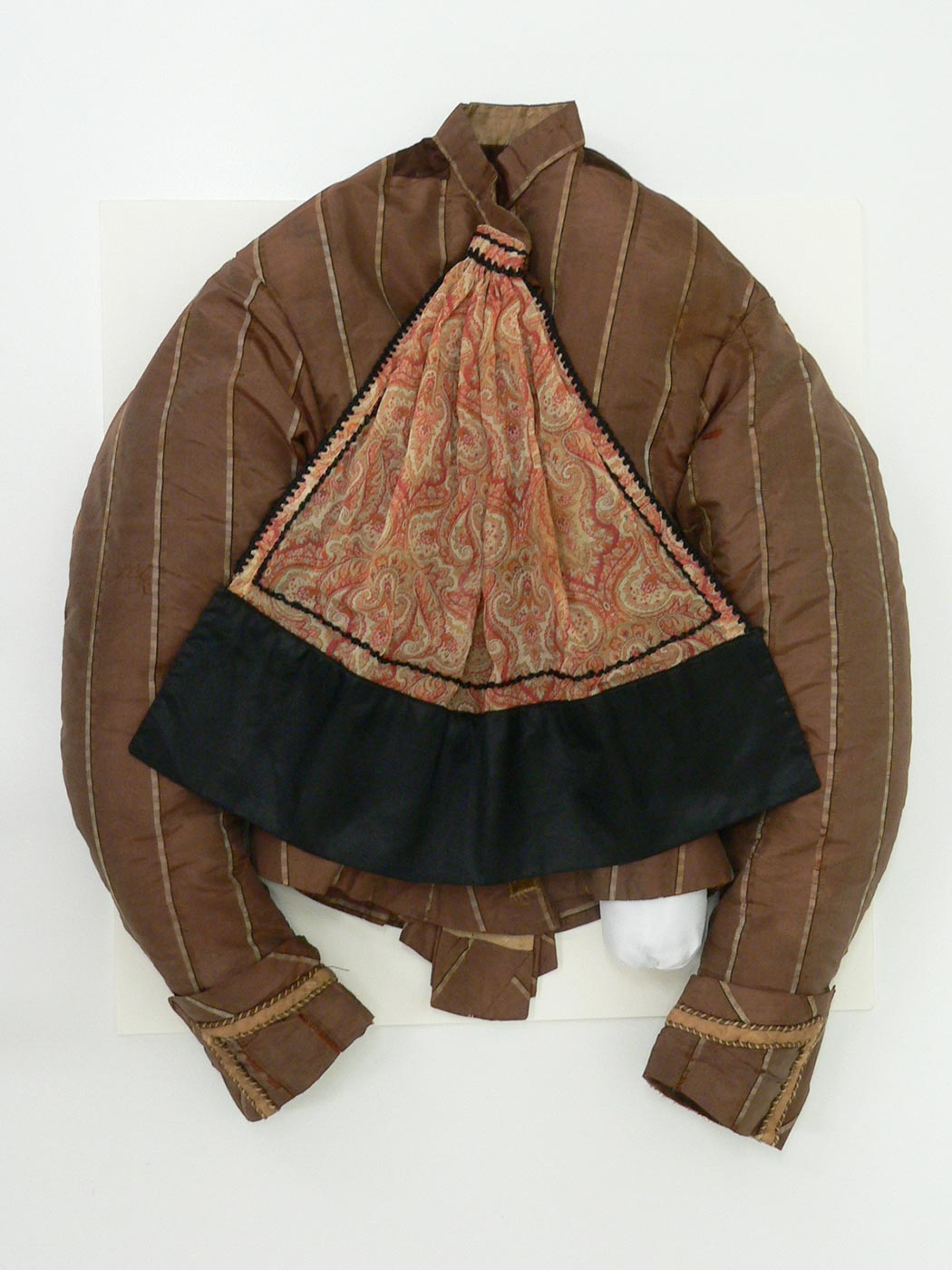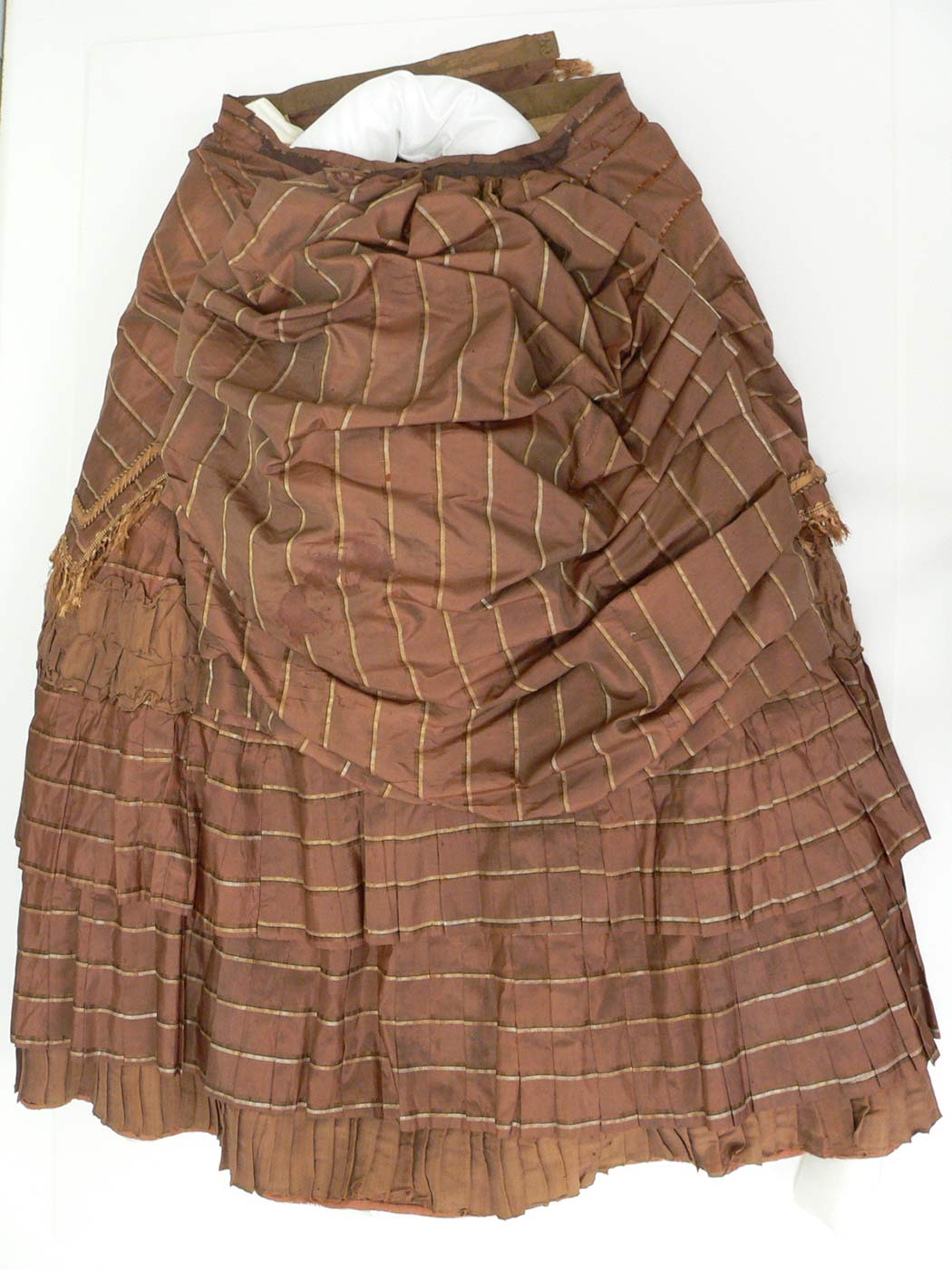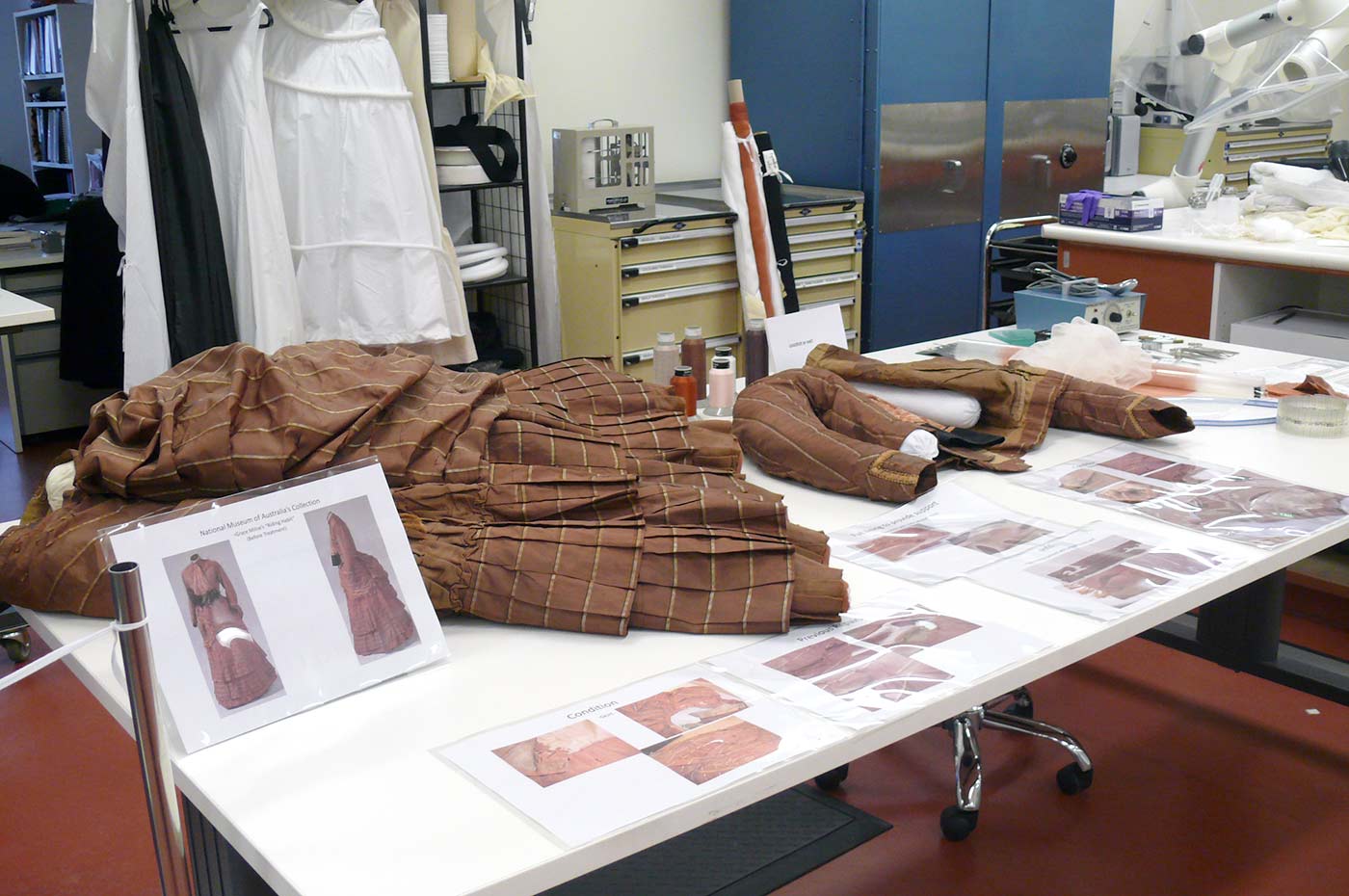Conservators in the National Museum's paper and textiles lab work on a wide range of objects, from the commonplace – such as newspapers, photographs and clothing – through to quite valuable objects and those with strong personal or historic connections.
Conservator Carmela Mollica on fabrics conservation and conservator Jess Wignell on treating and handling paper-based objects.
These paper and textile objects are some of the most vulnerable to damage and deterioration. Some items were not designed for longevity but have found their way into the Museum’s collection because of their acquired significance.
Objects intended for a limited lifespan, such as billboard posters, are typically produced from low-quality materials, which are likely to deteriorate rapidly and require conservation.
Conservators working in this lab need to be familiar with the wide variety of fibres, inks, dyes and pigments found in paper and textile objects. They also have an understanding of the many processes and technologies involved in the manufacture of objects over time.
It may not be possible to prevent deterioration in these objects altogether, but conservators can manage the rate of further change and protect them from factors that cause deterioration.
Billboard poster featuring the FJ Holden, about 1953
This Holden billboard poster from the 1950s survived because it was never posted on a billboard and exposed to the elements. It became creased and torn over the years.
Twelve sections of the 6 x 2.7 metre poster needed conservation treatment. The poster sections were washed to remove dirt and chemicals resulting from breakdown of the paper. Tears were then realigned and repaired with a lining of Japanese paper.
The poster is stored with limited exposure to light, which can cause the paper to become brittle.
Brown silk outfit worn by Grace Milne, 1880s
Conservator Carmela Mollica's research into a costume worn by Grace Milne in the 1880s changed the perception of the way it was classified. The silk jacket and skirt from the Elizabeth Oates collection were originally described as a riding habit.
However, the style and the materials used to make these garments did not match the style and construction of riding habits of the period. The delicate material and the stylish cut of the bodice and skirt pointed more to a dress that was not for everyday wear or strenuous activity. The bodice and the skirt of this costume have decorative features that are unlikely to have been part of a riding habit, which would of necessity been made of much tougher fabric and with little adornment.
